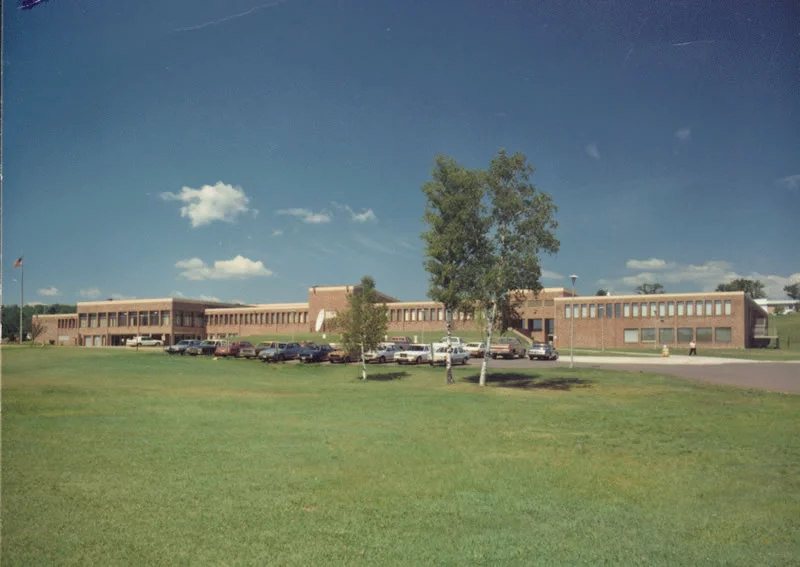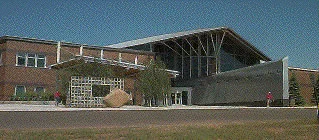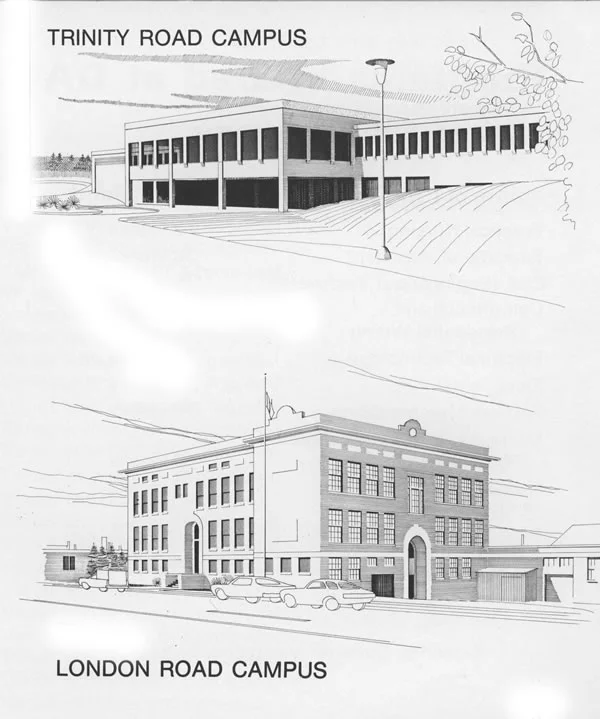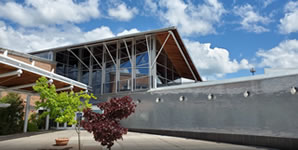A Brief History of Lake Superior College
On July 1, 1995, Duluth Technical College and the Duluth Community College Center merged to form Lake Superior College, A Community and Technical College at Duluth. The college was one of the first comprehensive community and technical colleges in Minnesota, and the very first in Northeastern Minnesota.
With the completion of a $10.8 million expansion to the former Duluth Technical College in fall of 1996, the previously separate campuses were consolidated on a 95-acre site overlooking the St. Louis River valley and the western part of Duluth’s famous harbor. The new college built upon a ten-year history of collaboration between the former community and technical colleges prior to merger. Today Lake Superior College combines the strengths of its merged components, each of which has its own colorful history.
Duluth Technical College (1950-1995)
After World War II, the Duluth Public Schools began to offer vocational classes for returning veterans, who enrolled in Auto Mechanics, Auto Body Repair, and Electronics courses at two Duluth high schools. During the next five years, several other vocational programs were added, and relocated to the Salter School, located near Lake Superior on London Road in Duluth’s East End. On February 21, 1950, these programs were officially established as an Area Vocational Technical Institute by the State Board of Education, to be administered by Duluth School District 709.

In the early 1960s, industrial technology programs were added, and the growing vocational programs needed larger, more modern facilities on a central campus. The site was selected, and ground was broken in 1966. In September 1968, instruction began at the new Duluth Area Institute of Technology (DAIT). The new campus was located on a scenic hilltop site overlooking Enger Park and the western portion of the Duluth-Superior harbor. DAIT offered 20 program majors in a variety of business, health, trade, and industry careers, as well as related general education courses.
By 1986 demand for training programs in business and health led to a major expansion to house new and expanded programs on campus. Another expansion followed in 1988-89. Meanwhile, in 1986, the campus began collaborating with the Duluth Center of Hibbing Community College to offer Associate of Applied Science degrees in several new fields such as Physical Therapist Assistant, Respiratory Care Practitioner, and Fire Technology and Administration.
Over the years, the institution went through more than one name change: in 1972 the name was changed to Duluth Area Vocational Technical Institute (DAVTI); in 1987 it became Duluth Technical Institute (DTI); and in 1989 it became Duluth Technical College (DTC), as all the state’s technical institutes were renamed colleges.
By 1989 the technical college had established a growing customized training component offering training throughout the state. The college also established a Dental Hygiene program in 1992 to replace a program that was being discontinued at the University of Minnesota, Duluth.
In 1994 DTC completed a $15 million Aircraft Rescue and Fire Fighting Training Center on a site located in the southwest end of Duluth. This center and its programs quickly gained world-wide recognition.
Between 1968, when the current campus opened, and 1994, enrollment at Duluth Technical College increased from 705 to 2236 students.
Duluth Community College Center (1984-95)
In 1984, Hibbing Community College began an outreach program, offering courses in Duluth hospitals and medical facilities for approximately 40 Nursing and Radiologic Technology students. Administrative offices were housed in the Minnesota State Office Building in downtown Duluth.
In 1986, general education classes were made available to people who were not in the health programs, and the Duluth Center of Hibbing Community College began a period of exponential growth. That same year, the community college began to offer liberal arts courses for nursing students at Duluth Area Vocational Technical Institute, initiating a decade of collaboration preceding the 1995 merger of the two institutions.
Enrollment in the community college classes more than doubled every year in the late 1980s. By 1990, the Duluth Center and Duluth Technical College had 16 joint programs. The community college center was serving approximately 1000 students and scrambling to find adequate facilities. In the interim, course locations had spread to church basements, government meeting rooms, a federal prison, and various other area locations.
A vacant wing was rented from Duluth’s private Marshall School, including a former chapel and convent. Pews were removed, and the chapel was converted first to a classroom, later to a learning center. Confessional booths were used for storage. Former bedrooms for nuns became faculty offices. A basement shuffleboard court became a science lab.
Facilities were not always adequate to meet demand. For a time, one coed bathroom served 400 students and teachers. Eighteen instructors shared one office. Classrooms were furnished with cast-off furniture. “We spent a lot of time repairing chairs,” recalls Carolyn Kleiner, former Duluth Center Director. Additional space was rented. Trailers were brought in to become faculty offices. A storage garage became the college bookstore.
Meanwhile, administration of student services and budget was still done through Hibbing Community College. Though the Duluth Community College Center never gained full status as a separate community college, in 1993 it became independent from Hibbing Community College, with its own budget, administration, and curriculum, after a long period when the status of the burgeoning institution was a source of contention.
Throughout its existence, the Duluth Community College Center depended on relationships worked out with other institutions. “A tremendous amount of negotiation and cooperation went into getting this school established,” says Kleiner. This complicated and sometimes difficult history, however, made the Duluth Center especially suited to become part of the first merged, comprehensive college in the region.
Lake Superior College (1995-Present)
With construction of the building expansion in 1996, the community college programs moved into the Trinity Road campus as space became available. Students and staff at the recently merged, comprehensive college benefited from improved science labs, computer labs, a new Dental Hygiene facility, a new library, and better classroom and office space, as the new expansion opened in September 1996. The recently completed addition won top honors for its aesthetically-appealing design with two 1997 awards from national organizations: first from the American Institute of Architects and the American Institute of Steel Construction for innovative design and excellence using structural steel; and later from the Educational Interiors Showcase awards sponsored by American School & University magazine.
As of the 1997-98 academic year, Lake Superior College had approximately 2700 students enrolled in classes for credit. The college offered a wide range of majors and general education courses for students planning to transfer to four-year colleges and universities, and over 75 certificate, diploma, and degree programs in career and technical fields.

Notable Dates in Lake Superior College History
- 1945 First Vocational classes start in Duluth, MN.
- 1946 Vocational programs move to Salter School on London Road.
- 1950 State Board of Education establishes Area Vocational Technical Institute.
- 1968 Trinity Road campus opens as Duluth Area Institute of Technology (DAIT).
- 1972 DAIT name changed to Duluth Area Vocational Technical Institute (DAVTI).
- 1984 Hibbing Community College offers classes in Duluth medical facilities, and opens office in State Office Building downtown.
- 1986 Duluth Center of Hibbing Community College offers liberal arts courses for DAVTI nursing program. Community college courses held at various sites in Duluth.
- 1987 DAVTI name changed to Duluth Technical Institute (DTI).
- 1989 DTI name changed to Duluth Technical College (DTC).
- 1993 Duluth Community College Center gains administration and services separate from Hibbing Community College.
- 1994 DTC completes $15 million Aircraft Rescue and Fire Fighting Training Center.
- 1995 Minnesota State Colleges and Universities establish Lake Superior College: A Community and Technical College in Duluth (LSC).
- 1996 LSC expansion complete. Trinity Road campus now houses the former Duluth Technical College and Duluth Community College Center.
Created May 5, 1998 for Lake Superior College by Tim Larson and Gary Kruchowski


